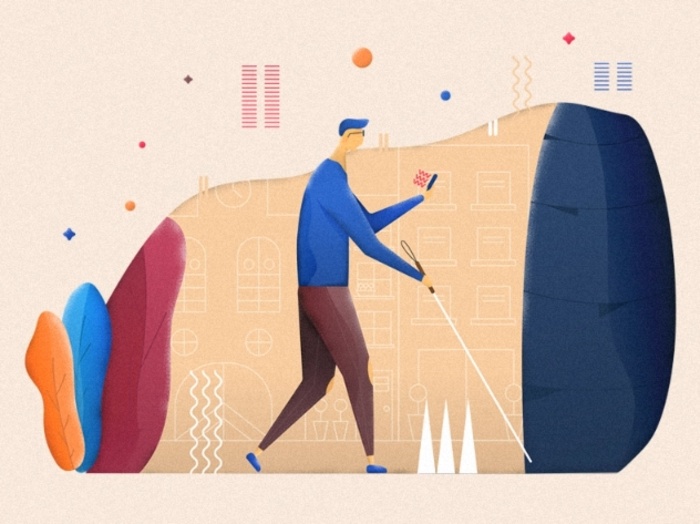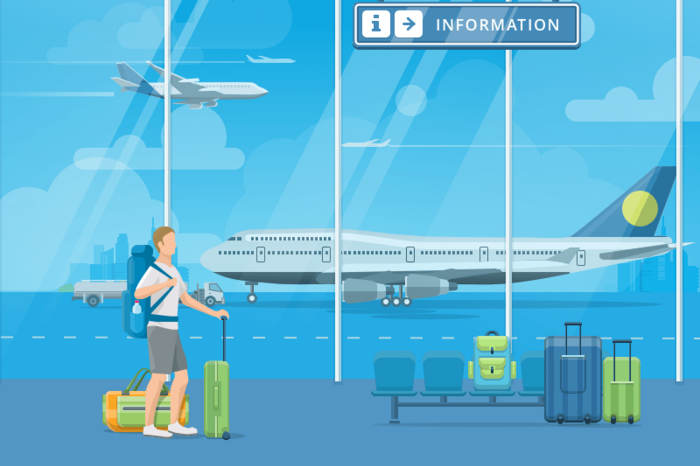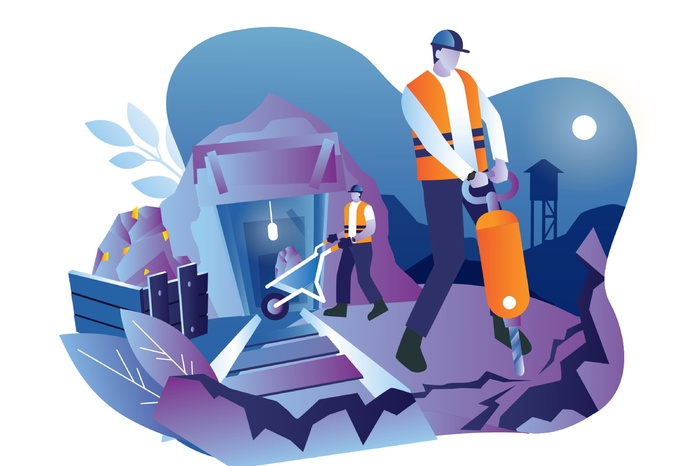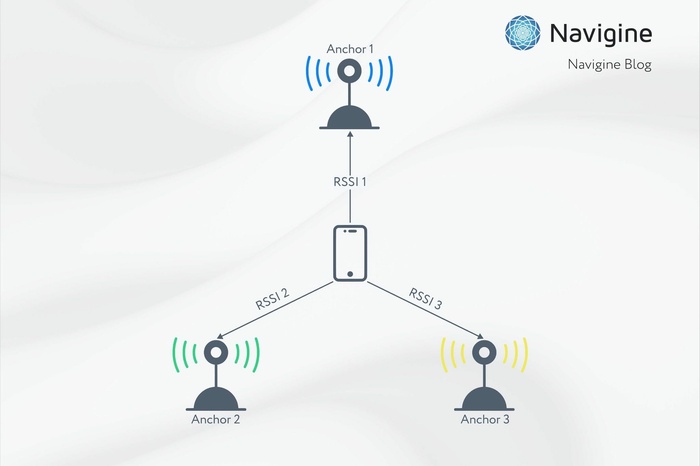Source - Jakub Šalmík
People with eye problems are restricted in movement. They have difficulties walking along the streets and visiting public places, including stores, shopping malls, and railway stations. To help people with limited mobility and improve quality of their lives, many companies implement into their infrastructure innovation technologies, such as indoor navigation for the visually impaired and the blind. The platform is based on the precise localization technology and helps users to navigate around buildings. With its help, visually impaired people can move on their own around buildings or quickly search for the required places.
The basic principle of indoor navigation for the visually impaired
According to WHO, about 2.2 bln people in the world have problems with their eyes. They all, experience difficulties connected with movement. Special walking sticks and tactile surfaces allow the blind to move safely, however, they can’t show the direction of their route. In such situations, indoor navigation systems become the optimal solution to create comfortable conditions for their lives. The main advantages include:
- Increasing the confidence of visually impaired people while attending public places;
- Improving the safety of blind;
- Increasing visitors’ loyalty to the company;
- Positioning the company as an advanced and innovative enterprise.
Indoor navigation is carried out using the mobile application that makes use of iBeacons, sensors on a smartphone, and special software. To find the necessary object, the user needs to switch on the audio guide on their phones. The location of the blind person is defined by the system itself which later directs him to the required place.
The main functions in detecting the location are performed by beacons installed in various parts of the building. At the pre-set intervals they send out radio signals that are directed to the server and then, in the form of data, are sent to the smartphone with the pre-installed application. Thus, if a visually impaired person is in a business center, the system can help them find all points of interest (POI), such as conference halls, ATMs, certain offices, or toilets.
To access the required room, a person just has to press the button ‘Find’ and say the search query, for example, ‘men’s toilet’. After that, the application immediately detects the location of the blind person and gives voice instructions that direct him to the nearest WC. As he approaches the necessary place, the sound in the smartphone fades or the phone starts vibrating, which informs him about the right direction.
Moreover, on the way, the audio guide can provide additional information about the route. For example, when a person is passing by a trash bin, the system informs about this and provides the data on its exact location.
The indoor navigation system for blind people is aimed primarily at people with eye problems but, if necessary, it can be used by anyone. It will allow navigating easily in a large building and quickly search for the necessary room or office.
Equipment for organizing the navigation systems for blind people
Modern indoor navigation for the blind requires special equipment that allows solving the issues of indoor navigation efficiently. The system implementation requires the following elements:
- iBeacons - tiny wireless sensors that support the Bluetooth® Low Energy protocol. These devices are characterized by low energy consumption and are equipped with batteries working properly for up to 5 years. Radio signals from beacons are transmitted at an interval of milliseconds. The accuracy of localization is about 2-3 m.
- Readers - special receivers that detect the signals from beacons. The received impulses are directed to the server where they are processed using special software.
- Digital platform - includes the software working with the data from the server. The platform is easily integrated with various wearable devices – smartphones, trackers, ‘smart’ watches, etc. It helps develop useful web services that fully meet the needs of visually impaired people.
The program requires a smartphone with the pre-installed mobile application with the integrated Navigine SDK. The digital platform for realizing tracking and positioning is compatible with Android and iOS so practically all mobile devices are suitable for indoor navigation.
Indoor Navigation and Wayfinding BLE Kit - Minew Hardware
Try all location-powered capabilities with the Navigine Indoor Indoor Navigation and Wayfinding BLE Kit - Minew Hardware
Purchase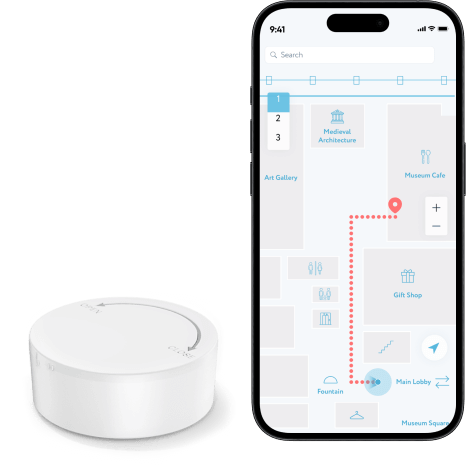
Navigine specializes in developing modern navigation systems for any industry. We are ready to help you in optimizing your business processes and creating an efficient indoor navigation platform for visually impaired people.
Navigine's Open Source Initiative
In addition to their commitment to improving indoor navigation for visually impaired and blind individuals, Navigine also offers proprietary navigation algorithms for developers. This Open Source concept allows developers to access and modify Navigine's advanced navigation and indoor positioning algorithms, empowering them to create customized solutions for their projects. Our Open Source solution not only fosters collaboration and innovation within the developer community but also aligns with Navigine's vision of making indoor navigation technology widely available and adaptable for various needs.
Discuss more over a private consultation:
